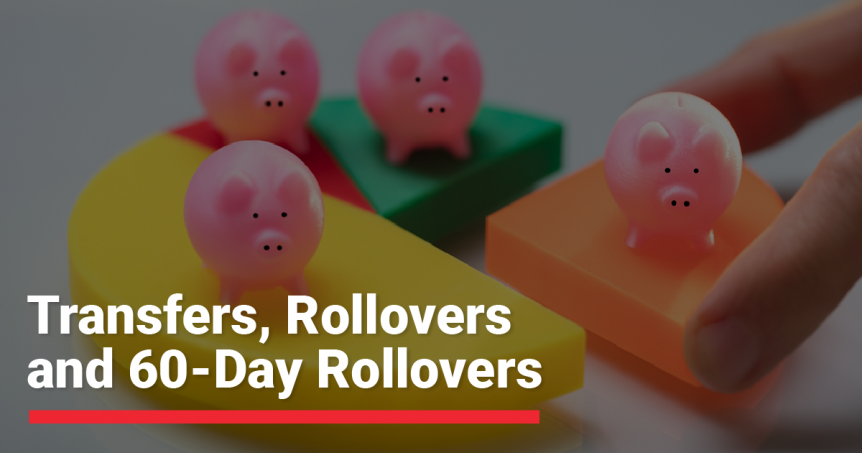A while back, one of our clients called to inquire about our thoughts on the article, IRA Rollovers Ruling Stuns Advisers and Savers. After reading it, I can certainly understand how the terminology in the article can be very confusing for the average person, so let’s clarify a few of things regarding this.
What is the difference between Transfers, Direct Rollovers, and 60-Day Rollovers?
From a financial services industry standpoint there is a distinct difference between Transfers, Direct Rollovers, and 60-Day Rollovers. Our industry attempts to use slightly different language from the aforementioned article, as does the IRS Publication 590 to facilitate a client’s understanding of the differences between these transactions.
Transfers
First off, the term Transfers, as defined in this article, is actually used in our industry when you are moving retirement assets from one IRA custodian to another IRA custodian. This is commonly called a Transfer of Assets. You can do this type of transaction as many times as you want over the course of a year because the account owner is not taking actual receipt of the funds in the retirement account.
Direct IRA Rollover
Direct Rollovers involve an employer-sponsored plan (usually a 401k or 403b) in some capacity. The account owner can rollover an old 401k to an IRA or may choose to rollover an old IRA to their new 401k plan. A check is ultimately made payable to the financial institution of choice for benefit of the account owner’s name (IE: XYZ Brokerage firm FBO John Smith). Since the check is made payable to the firm and not the account owner, the account owner cannot cash the check. Consequently, there is no tax liability and the 60-day rollover rule does not apply. Since the account owner cannot cash it or take receipt of the money, he/she does not have 60 days to complete the rollover (but why would anyone wait to deposit it anyway?). Usually these checks have a life expectancy of no longer than 180 days, so a new check may need to be reissued to the client to complete the rollover if they wait too long. You can do Direct Rollovers as many times per year as permissible by your employer sponsored plan.
Don’t miss: 3 Reasons to Roll Your 401k
60-Day Rollovers
The possible exception to Rollover involving an employer sponsored plan, of course, would be the 60-day rollover. This is where a check from a qualified retirement plan (IE: 401k, 403b or IRA) is made payable to the account owner, not another financial institution. It is important to understand that 60-day rollovers that commence from an employer sponsored plan (401k, 403b) are, by law, required to have 20 percent minimum withholding for prepayment of federal taxes. So the account owner would only get 80% of the value of the account. Conversely, if one takes a 60-day rollover from an IRA, any prepayment of tax withholding is left to the discretion of the account owner. You can do one 60-day rollover once per every 12-month period and the 60 day period commences upon the date of receipt of the check, not the date you initiated the rollover. If one is under age 59 1/2 when doing a 60-day rollover and they do not deposit to proceeds in a qualified retirement plan within the required time, they could be subject to an additional 10 percent penalty for early withdrawal.
The IRS ruling discussed in the aforementioned article on this 60-day rollover applies to all IRA accounts. For example, an investor may own five different IRA accounts at five different firms. Prior to this ruling, one could do one 60-day rollover from each of their five hypothetical IRA accounts each year. Now the IRS says, “No more.” They are limiting us to one 60-day rollover per year, no matter how many retirement accounts (IRA, 401k, and/or 403b) one might have.
The Bottom Line
To be frank, 60-Day Rollovers (or ‘Rollovers’ as the article calls them) are a crazy approach given the potentially large tax liability and the potential loss of tax deferred growth one could face. Your best, smartest, and safest way is to go with are the Direct Rollovers and Transfers that assure you of generating a tax-free distribution and protecting your retirement savings.
If you have any questions regarding this article or need clarification on the procedures to make any of these types of transactions possible, feel free to call us at (214) 220-0055. We look forward to hearing from you.




